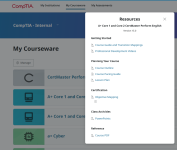I have finished my training of the Linux+ TTT series with Jason this week. It was awesome. I have been delivering training on Linux, Networking, Cybersecurity, and Penetration Testing since 2014. I learned the following things from
@jassonesckert .
1.) How can you engage students in an online session for 2 hours? It seems easy after this TTT series.
2.) Make an interactive session in Video tutorials (self-paced course).
3.) Practical First and Theory second. It seems a 3-5-time revision of the same topic. it is interesting.
4.) Always has a smiley face.
5.) Make available self-made resources.
Thank you, Jasson, for giving your valuable time in this TTT series.


